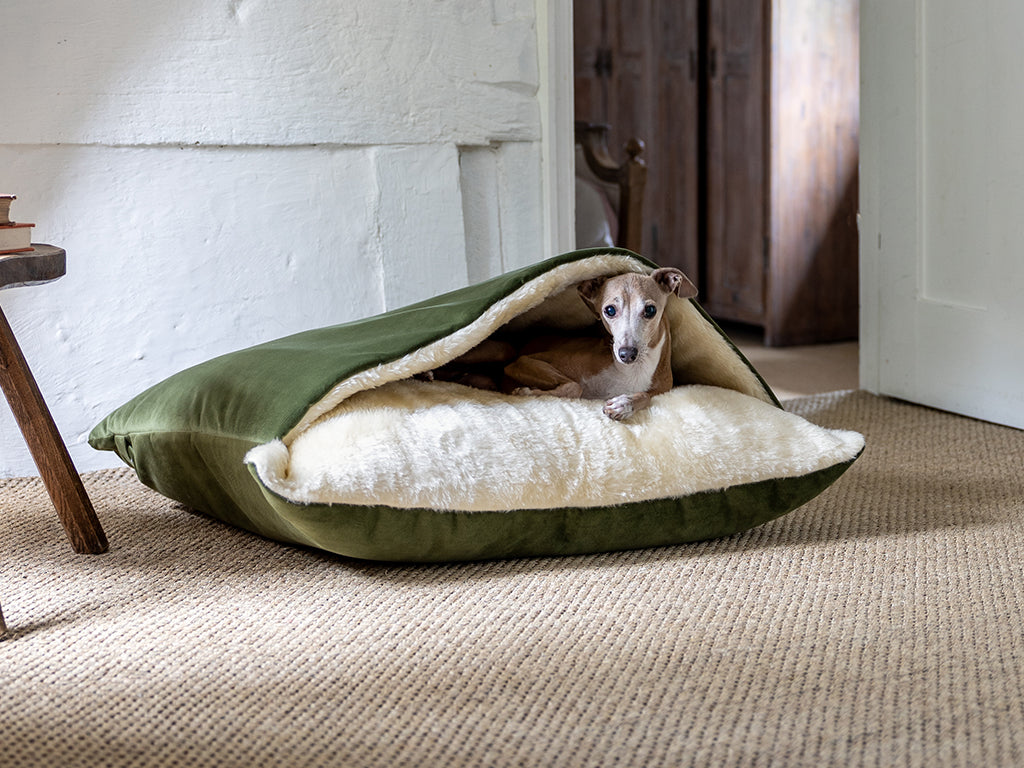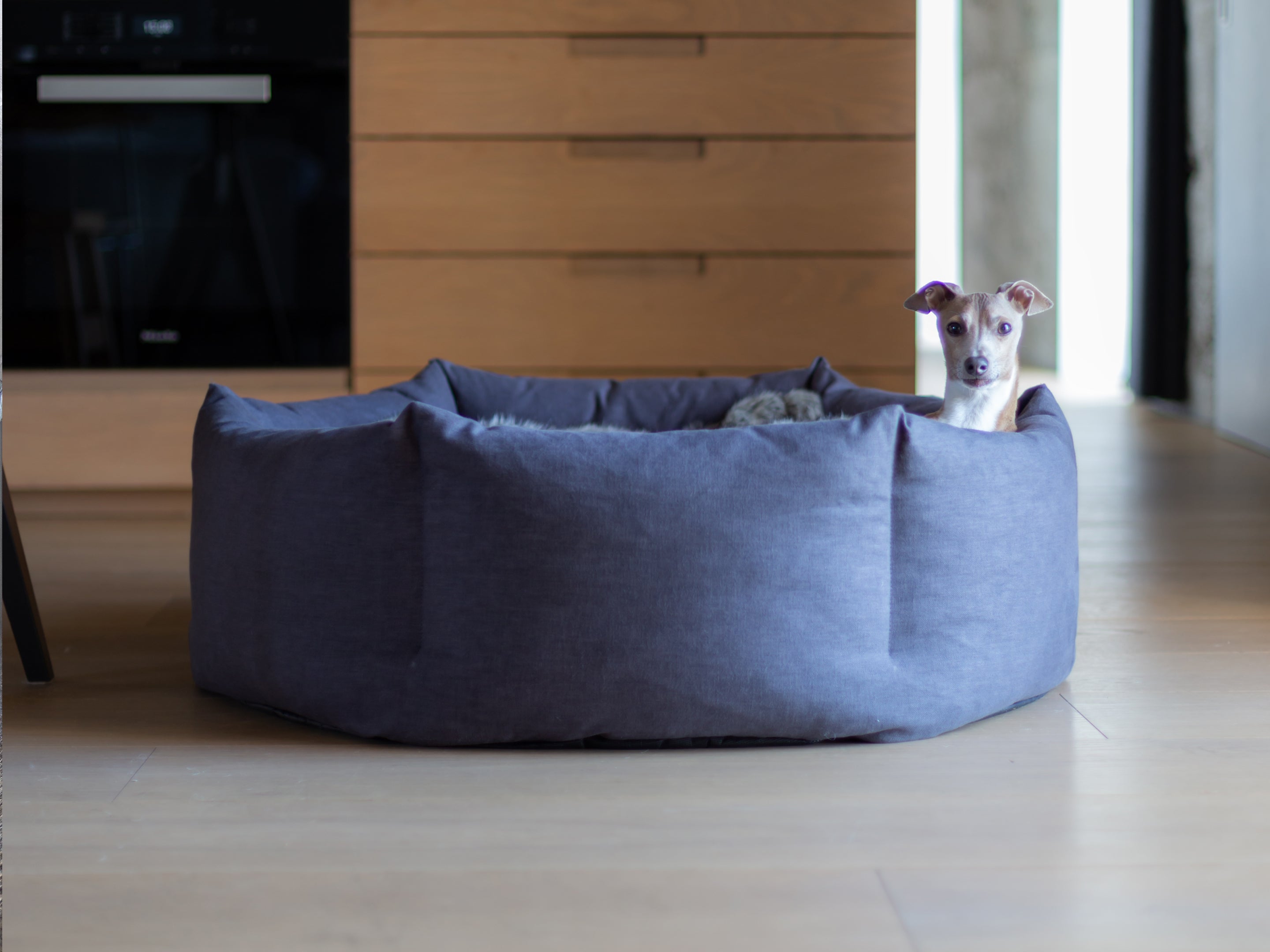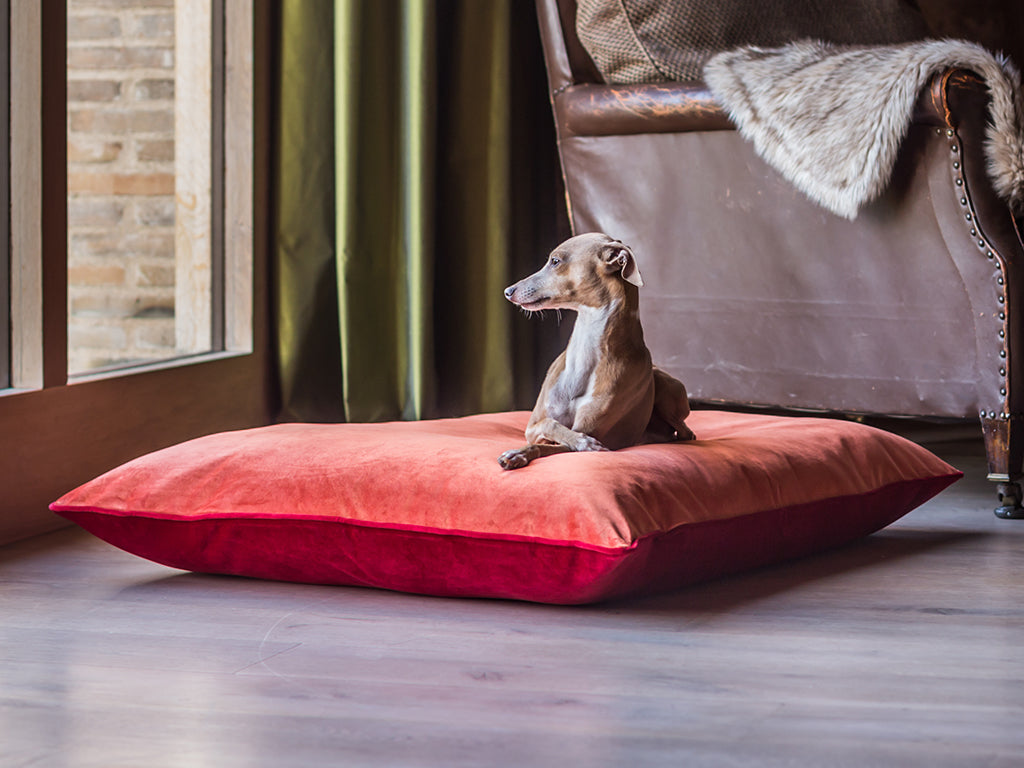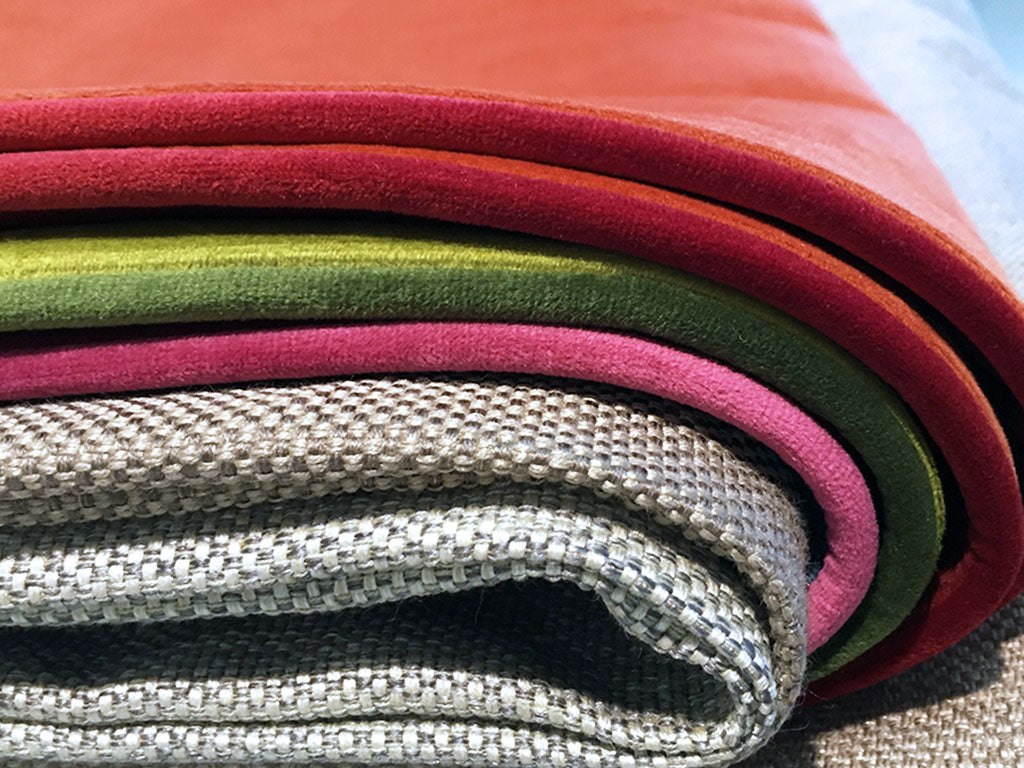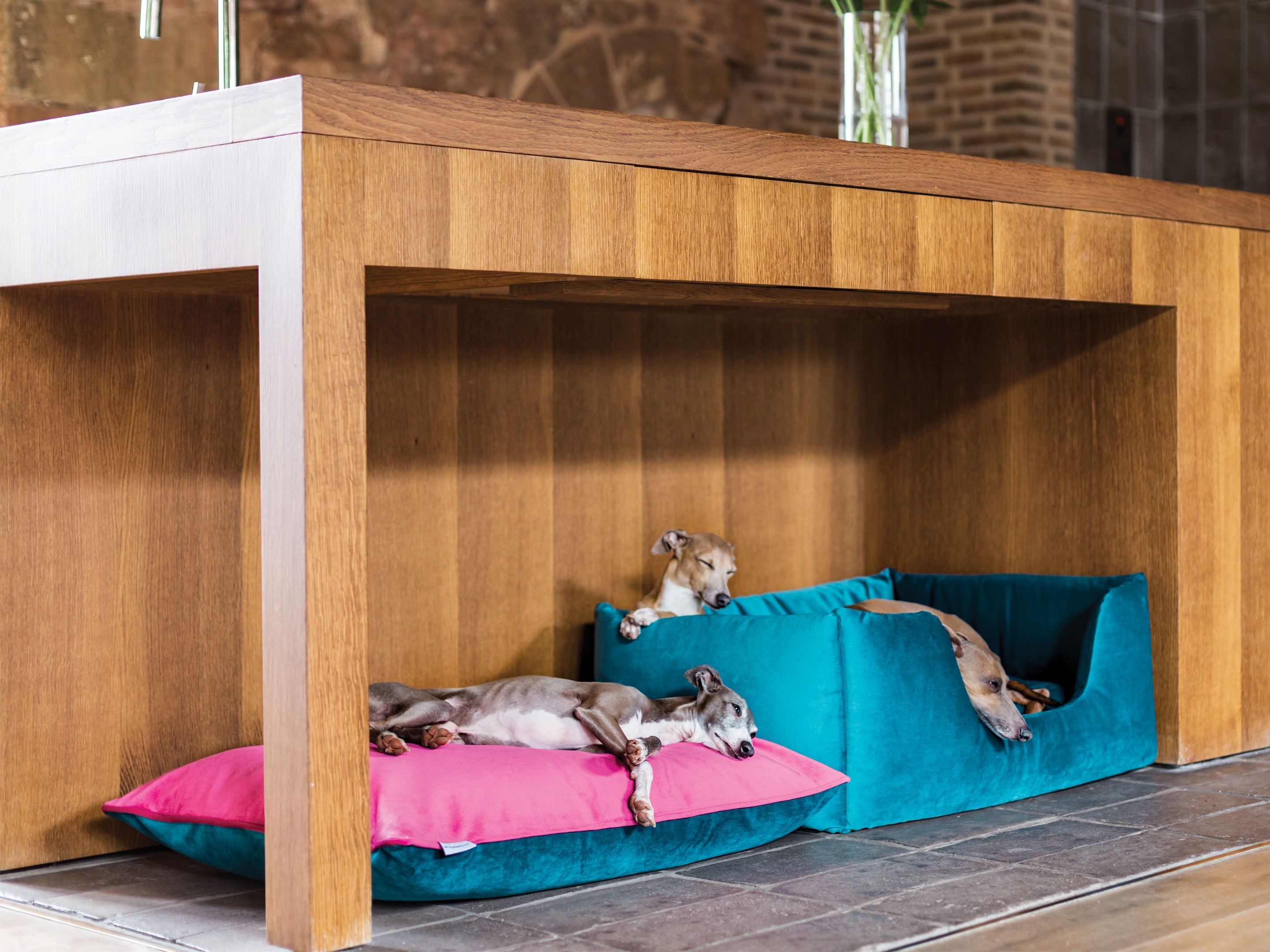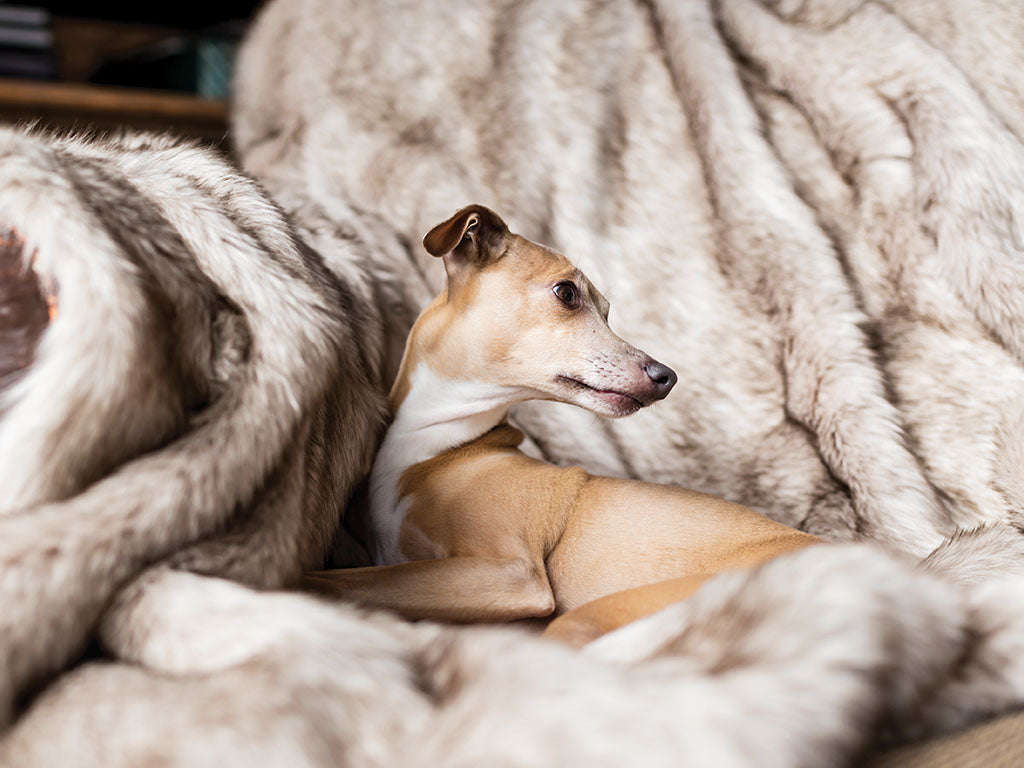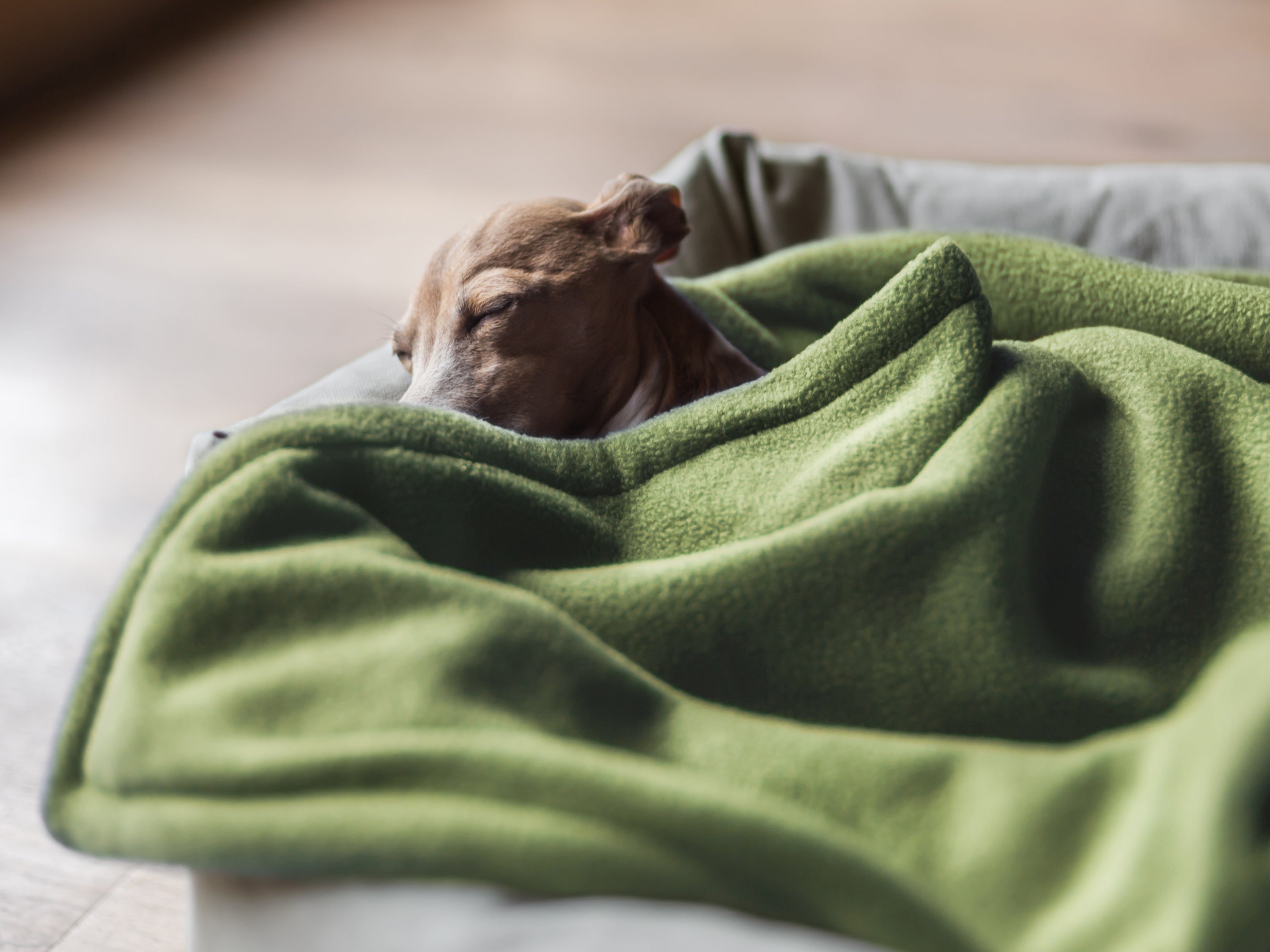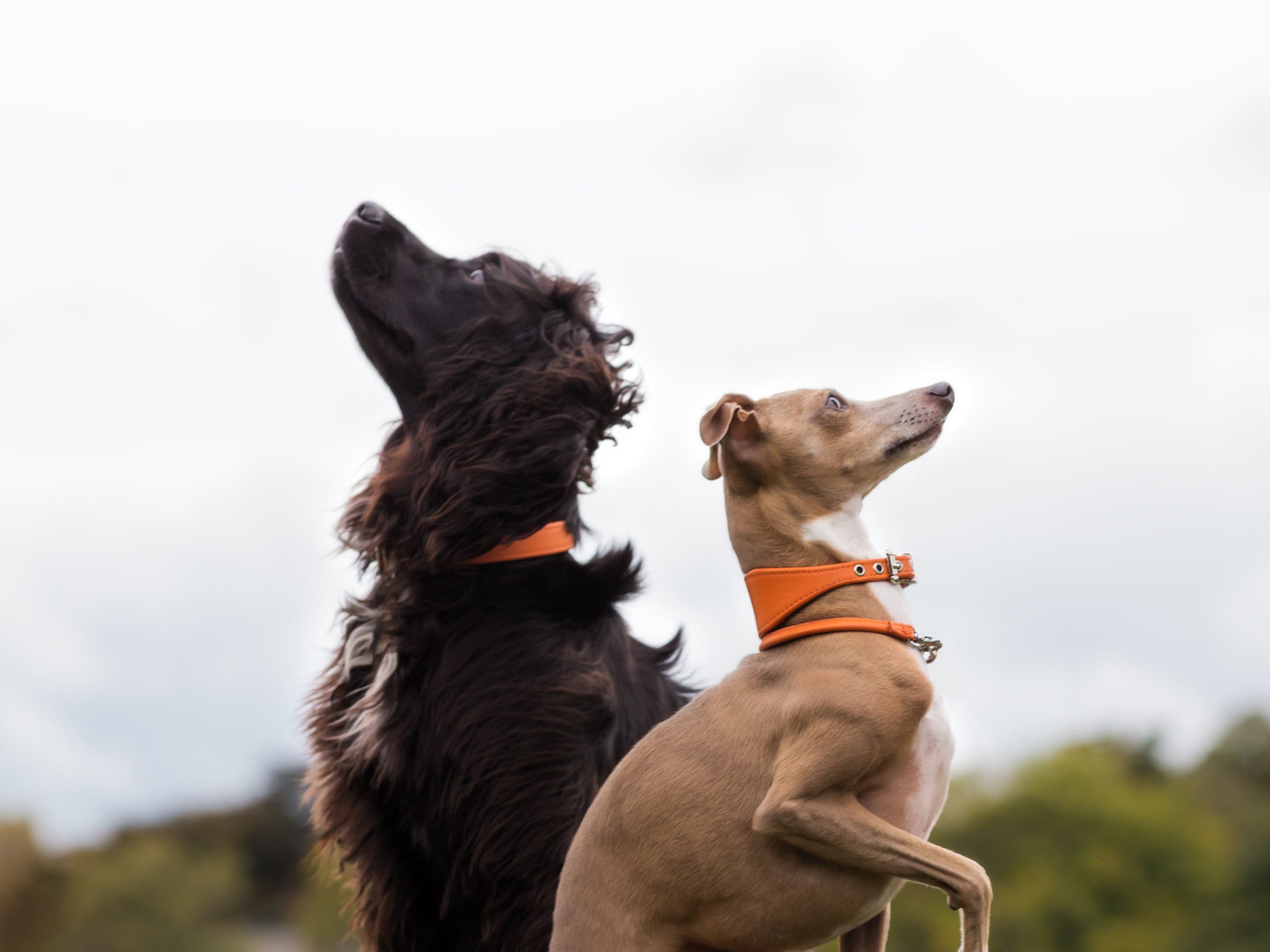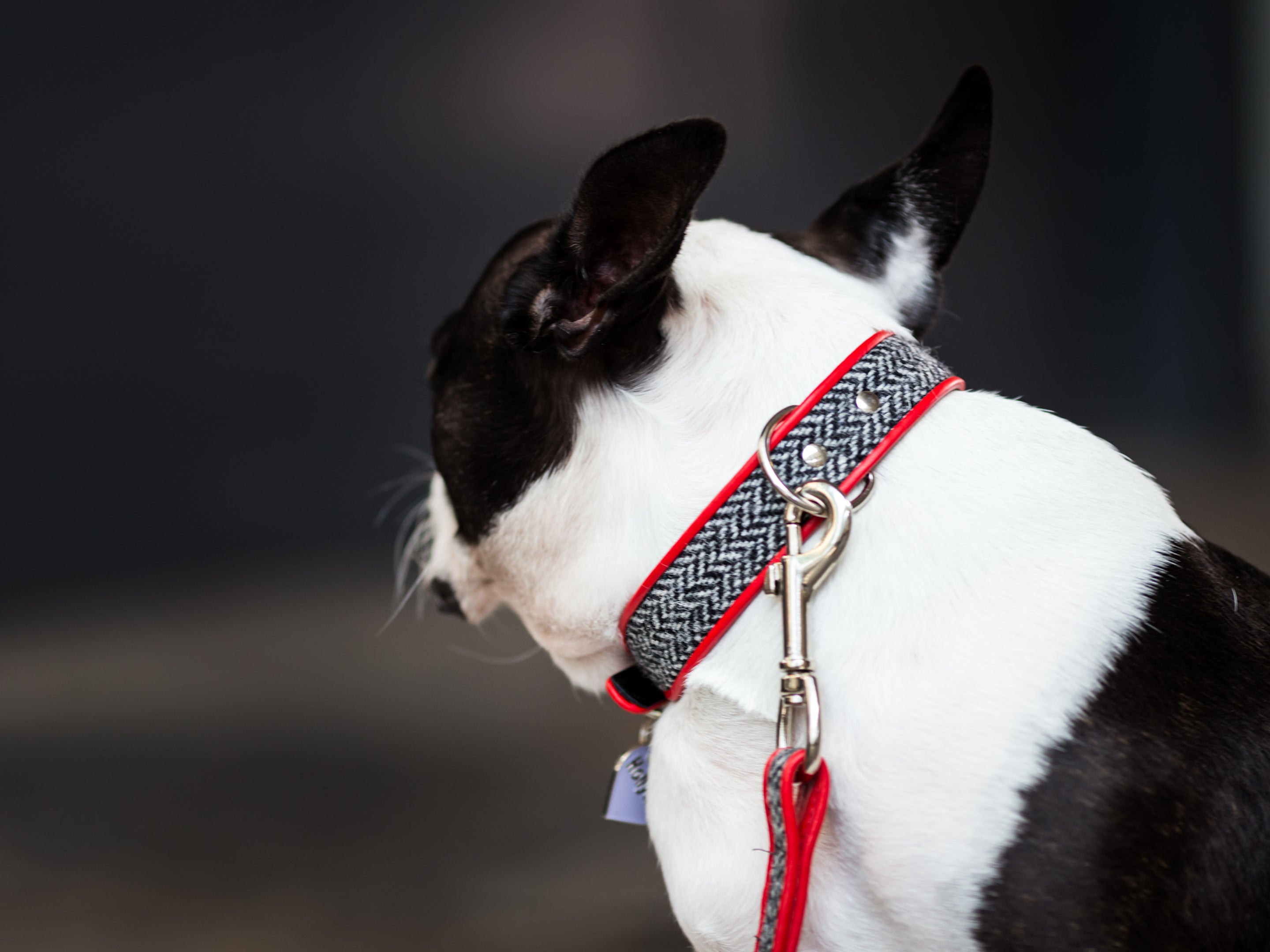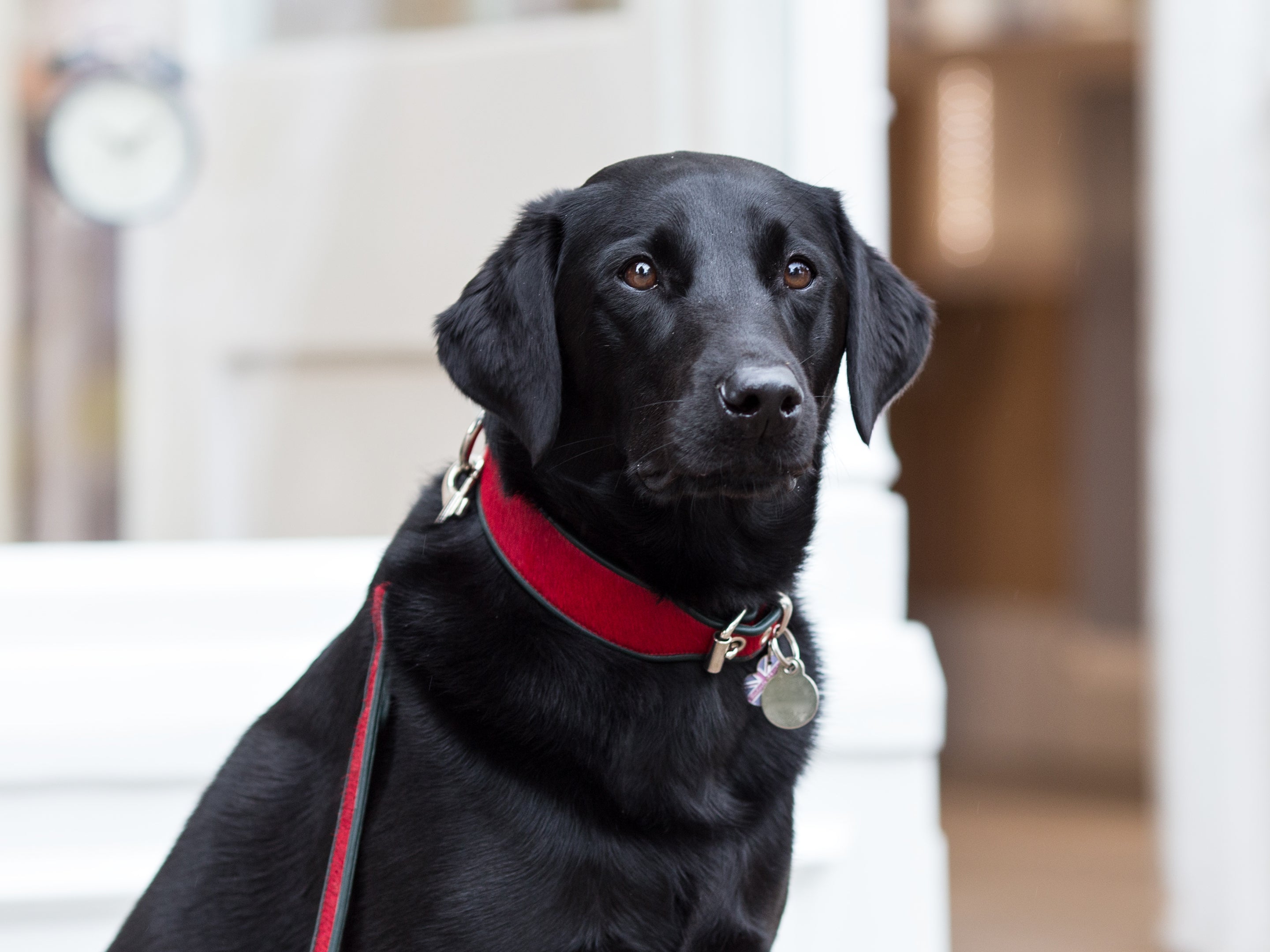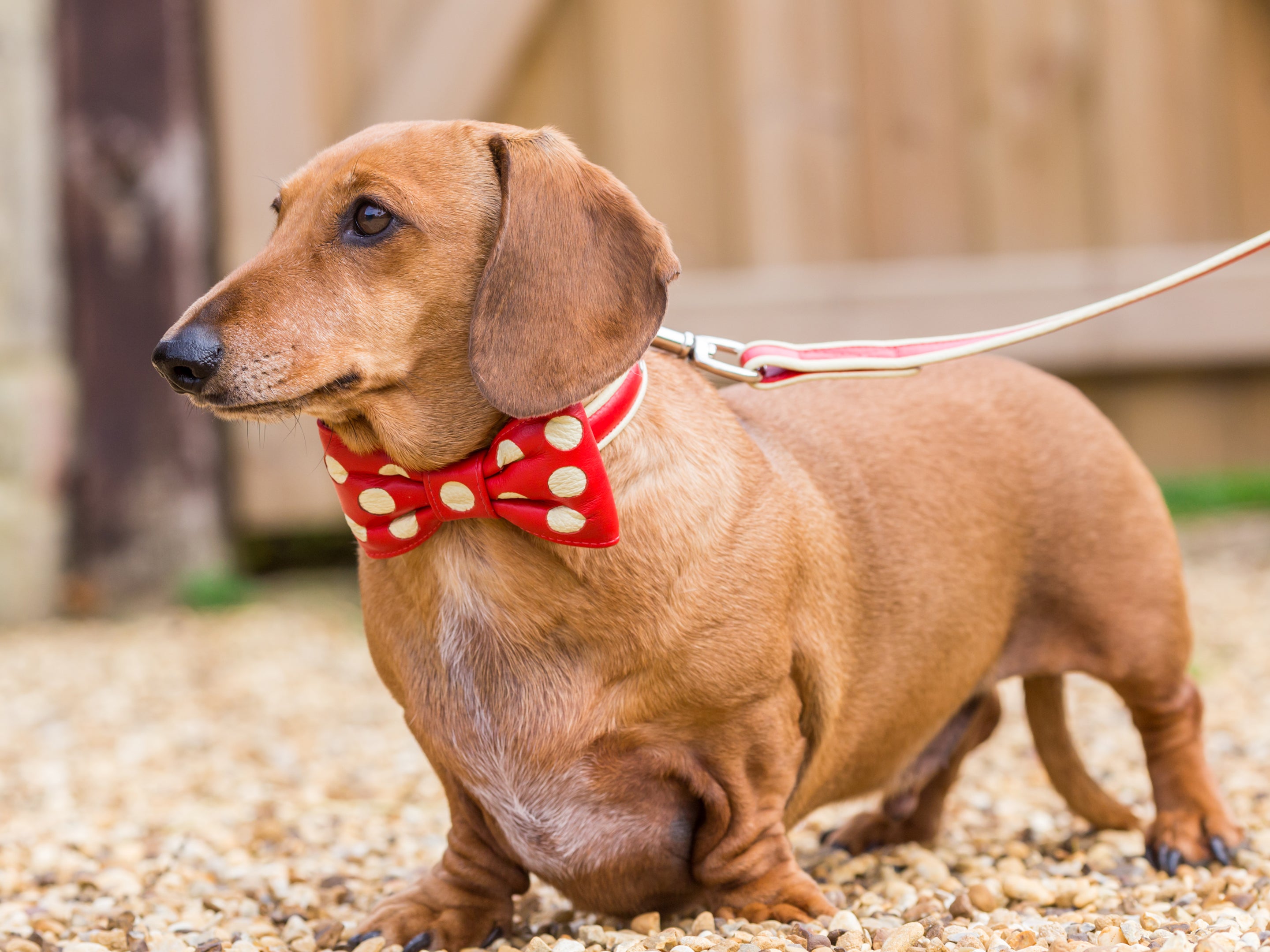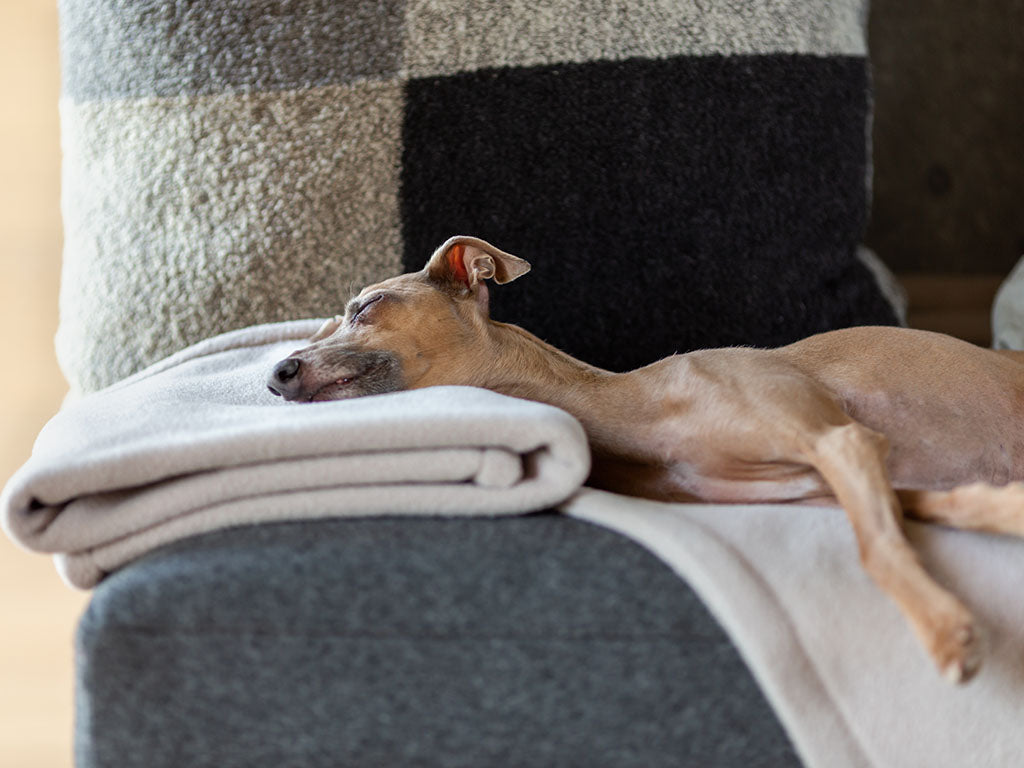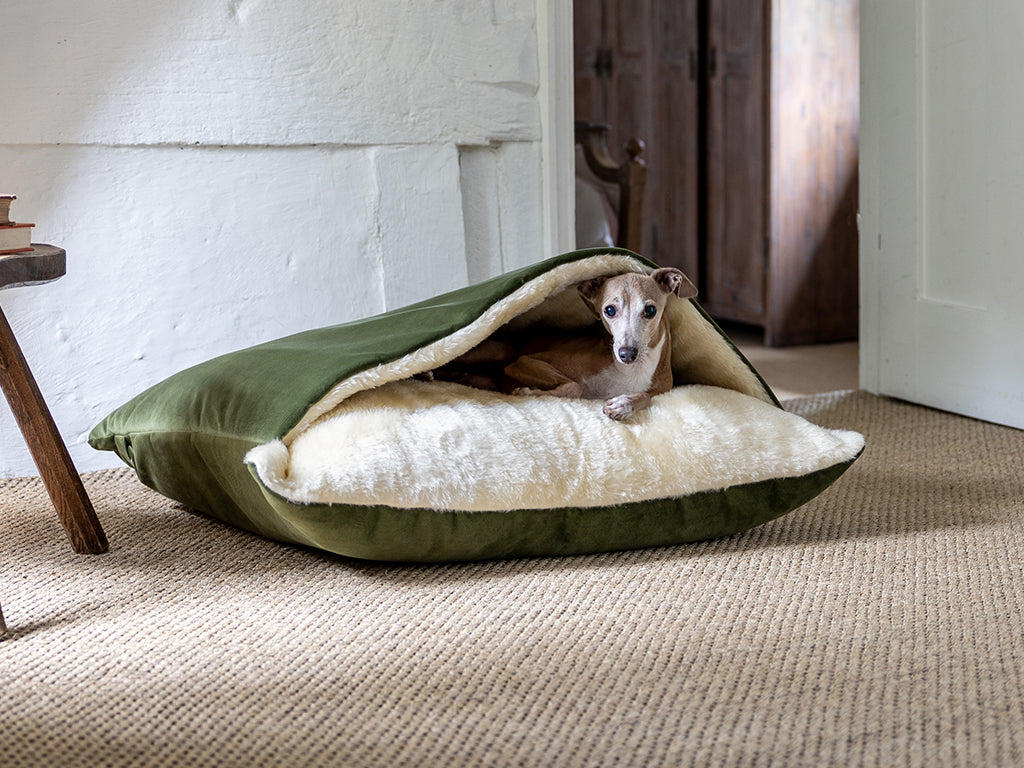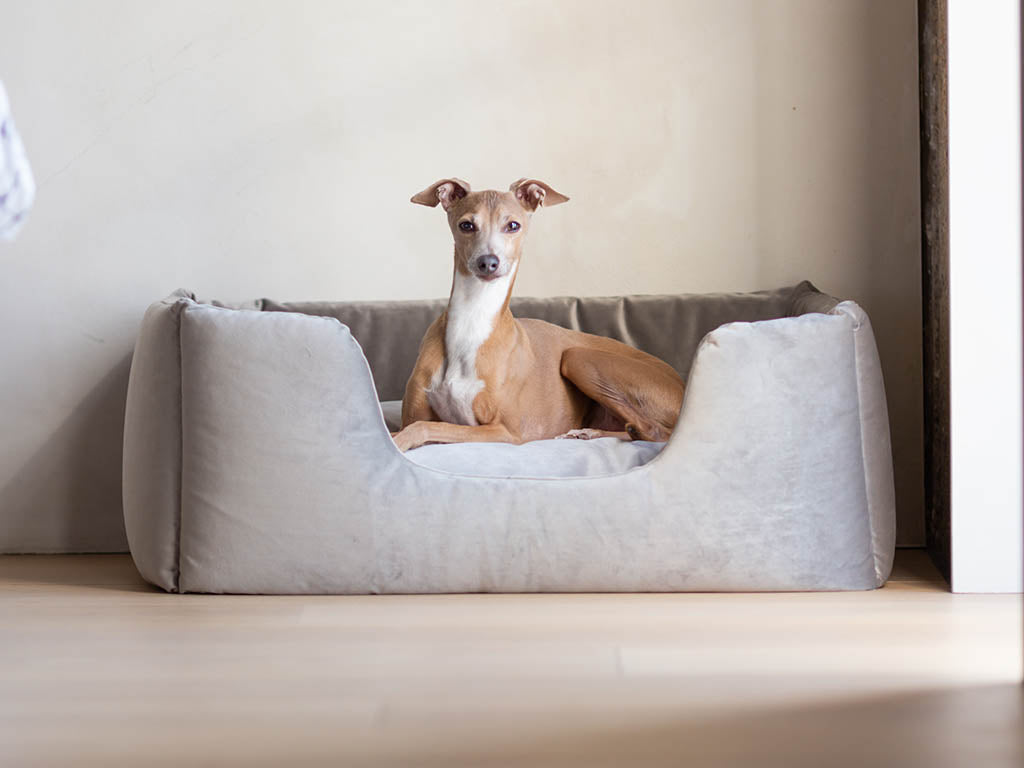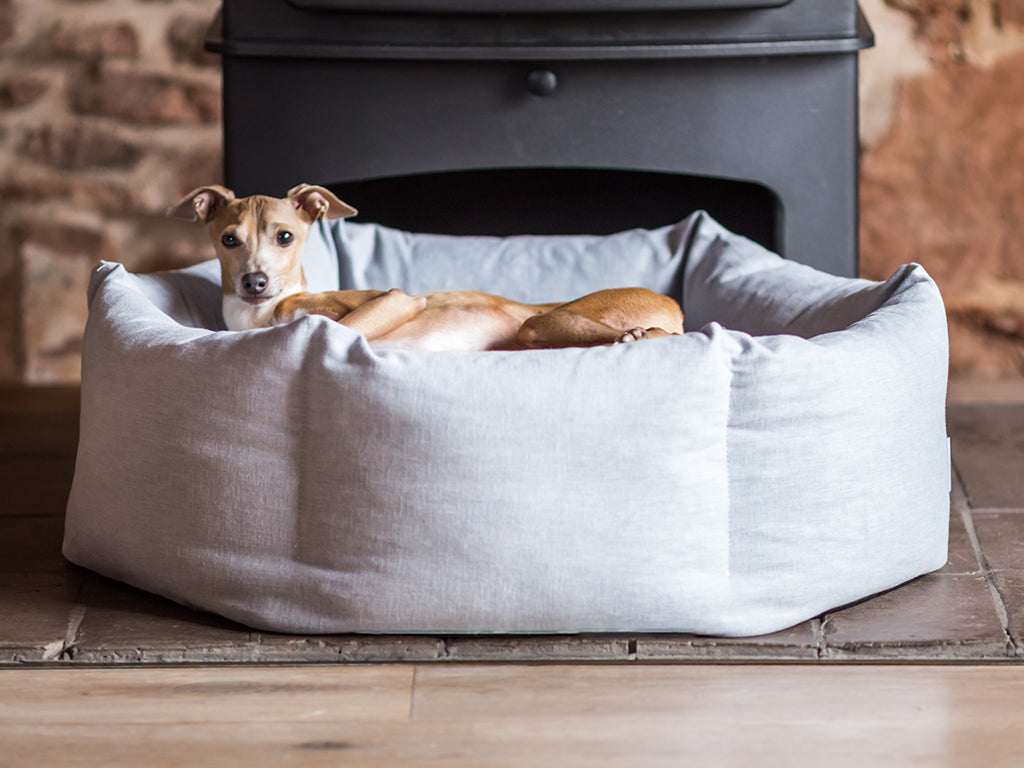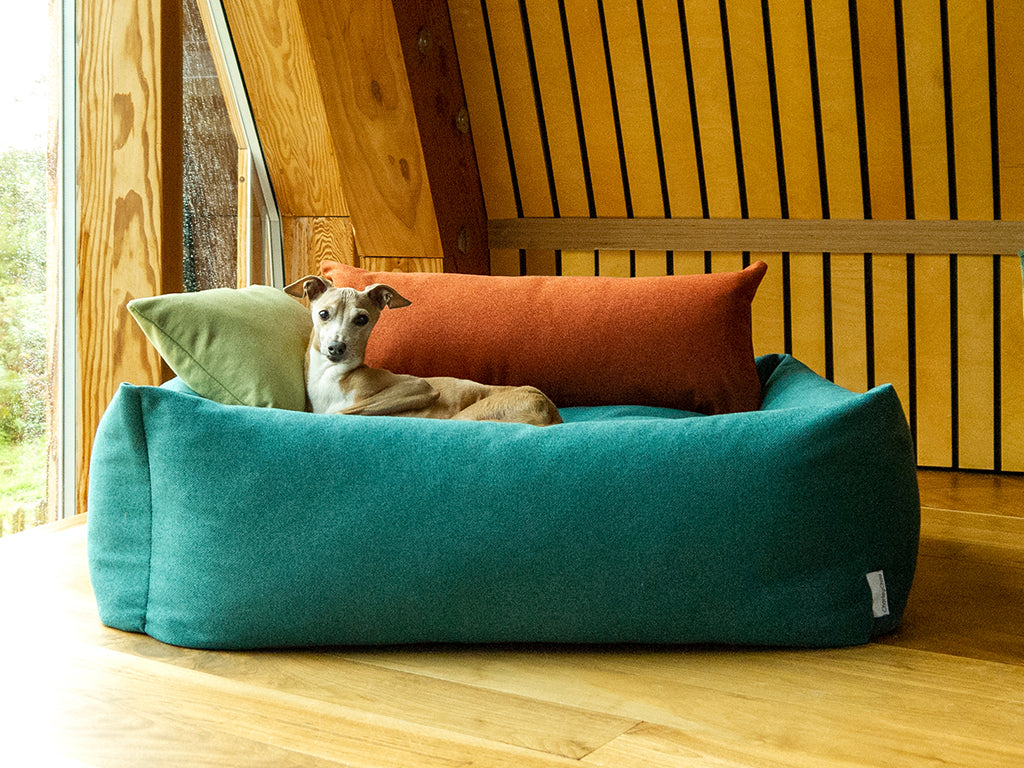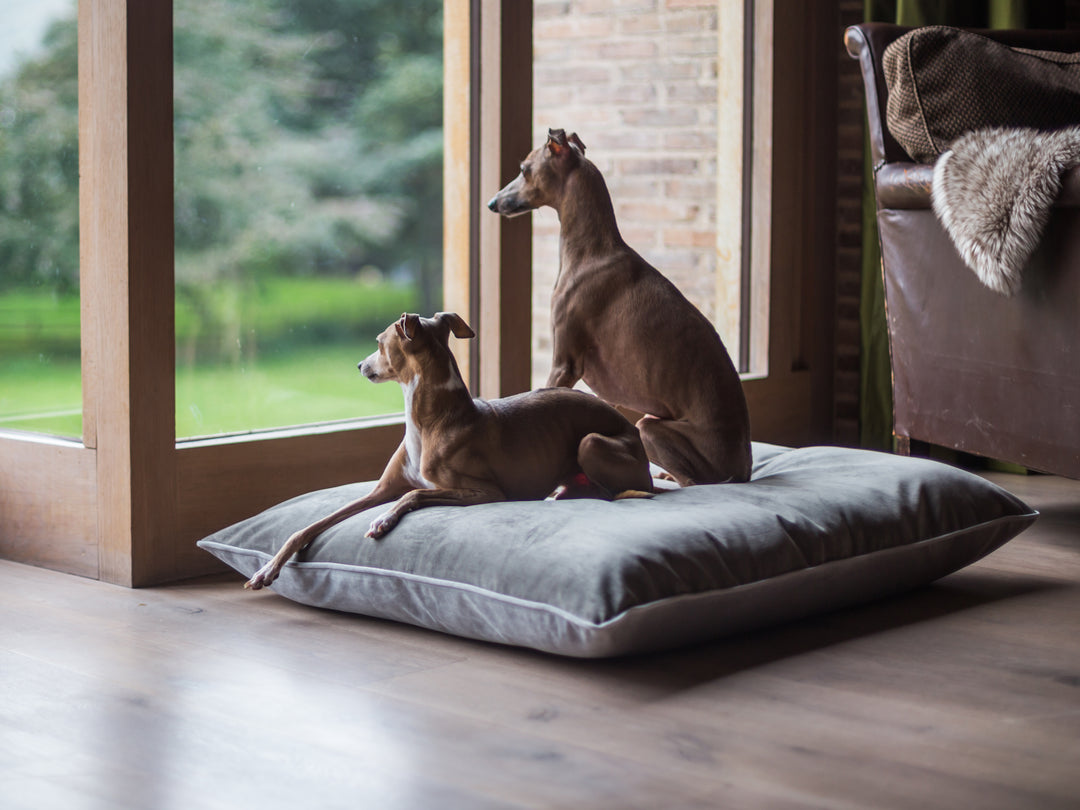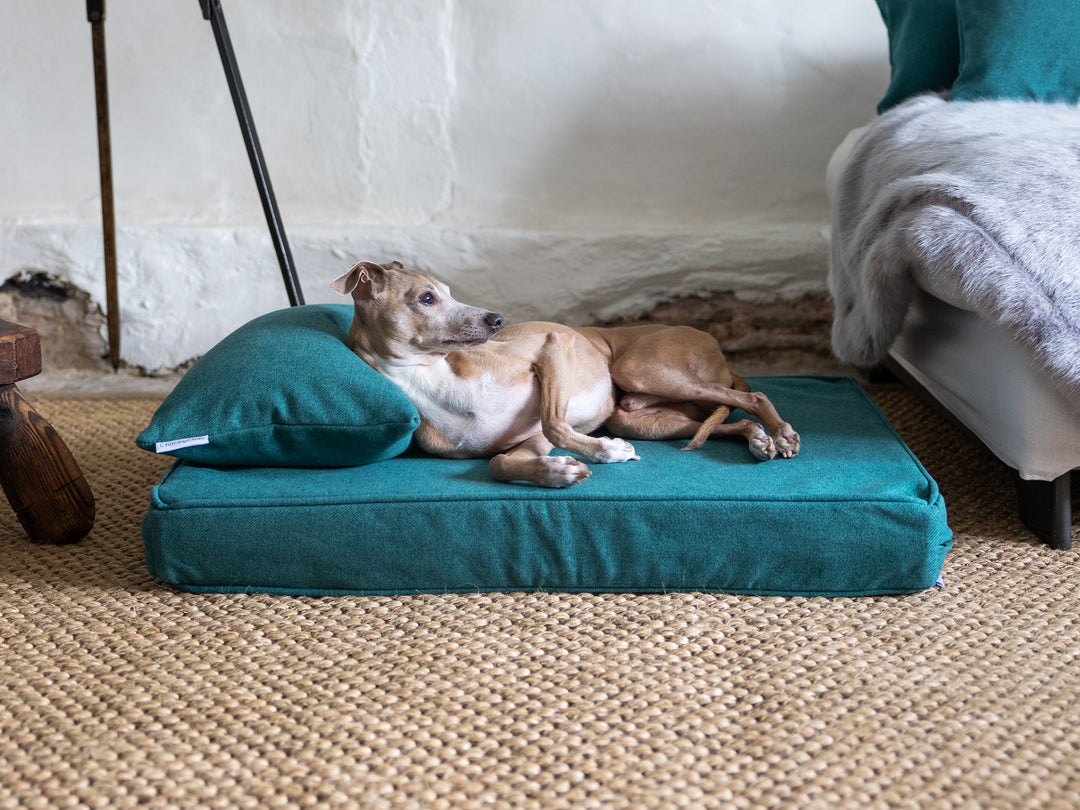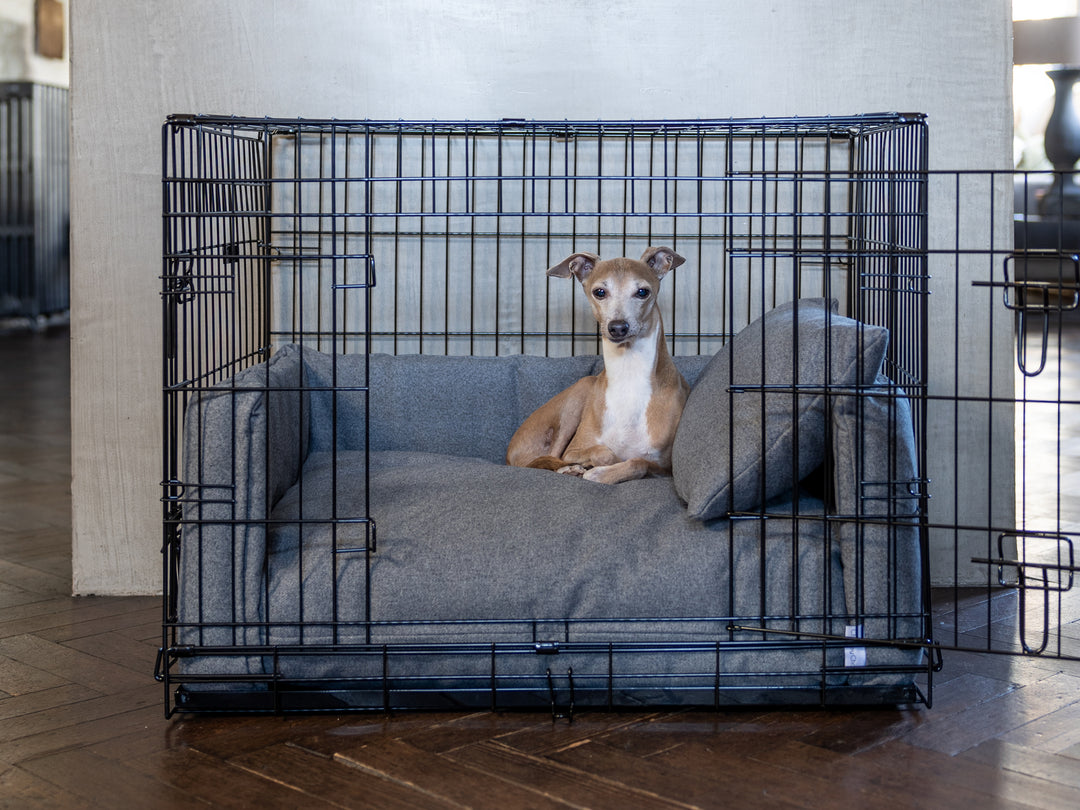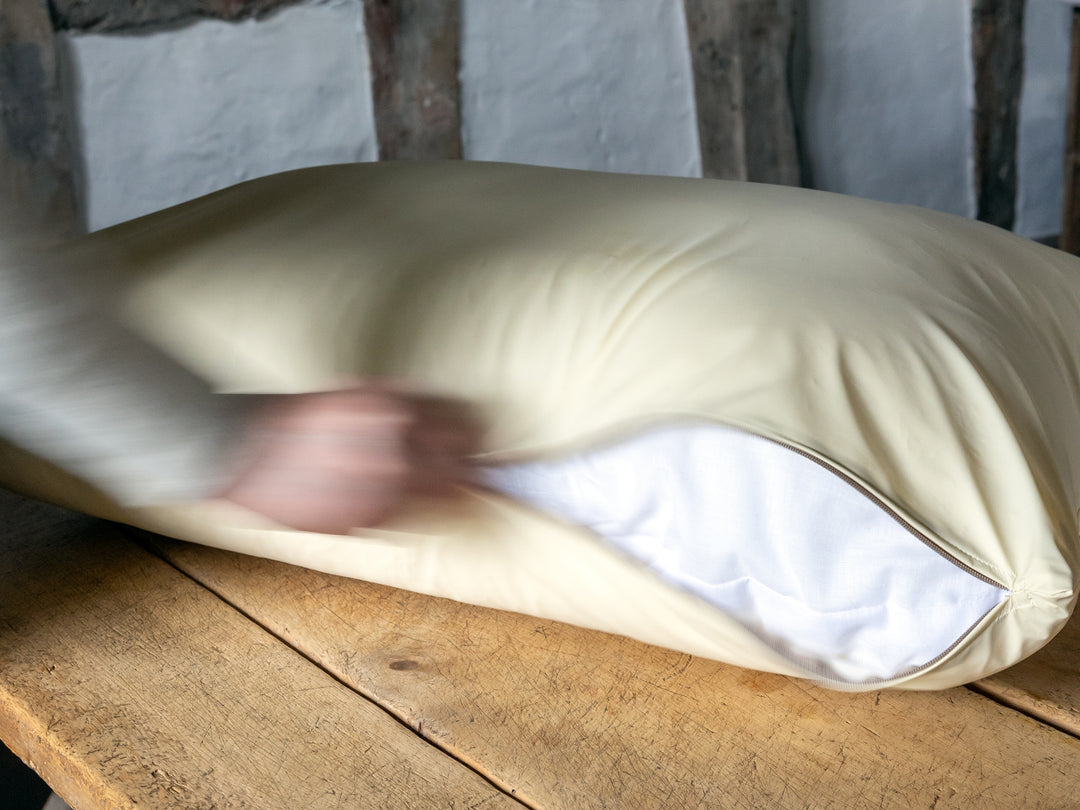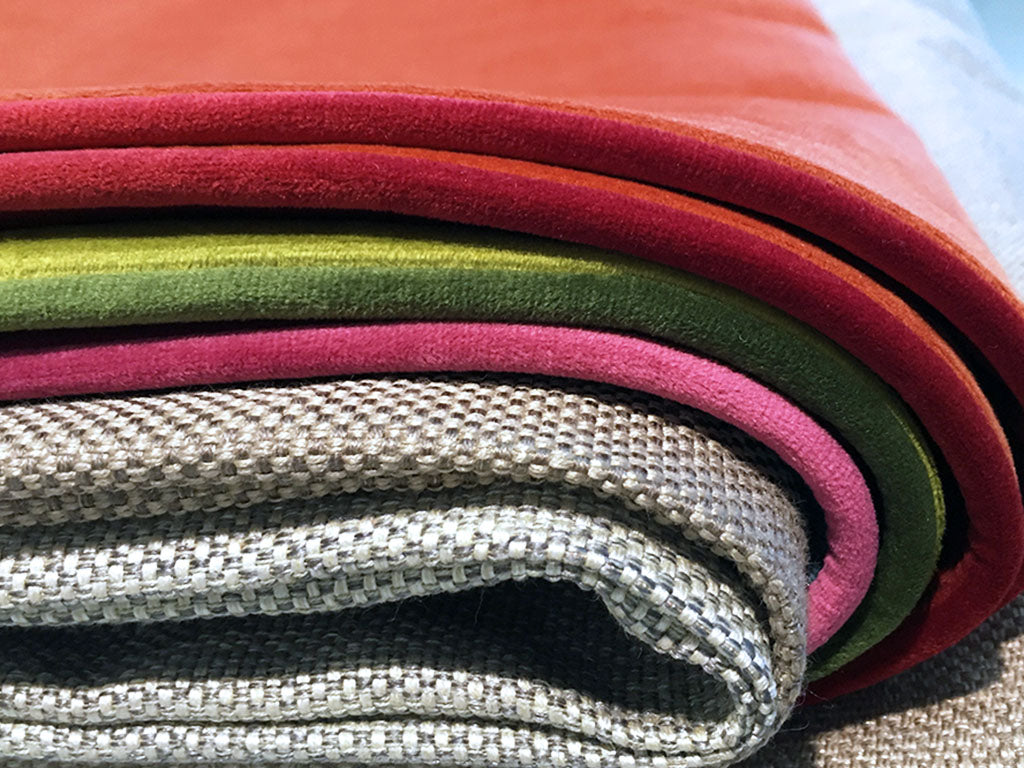How to remove fleas from a dog bed
Finding fleas on your dog or in your home is a worry as it can be difficult to eliminate fleas from not just dog beds but also the home. Our guide on how to get rid of fleas, larvae, pupae and flea eggs from your dog’s bed starts with the big picture of the flea life cycle and how fleas reproduce, and then we get down to the nitty gritty of removing fleas from a dog bed along with removing flea eggs, larvae and pupae from a dog bed too.
How to remove fleas from a dog bed: understand the flea life cycle

Dealing with a flea infestation requires an understanding of the whole flea life cycle because it’s not just mature, adult fleas that need to be removed from your dog, dog bed(s) and your home to get rid of a flea infestation.
Adult fleas hop on to a host (likely to be your dog in this case) and feed on the host. Adult fleas mate and female fleas lay eggs on the host that fall off as the host moves around. An adult female flea may lay up to 25 eggs per day, around 800 eggs in its lifetime – so you can see how quick an infestation can take hold if not dealt with as soon as possible.
Flea eggs can take 1-20 days to hatch depending on environmental conditions such as temperature and humidity (fleas love warm and humid), and they hatch as larvae.
Flea larvae - once hatched, flea larvae head to darker, humid environments and hide in carpets, cracks in the floor, dog beds, under cushions and blankets. These are areas where they can find food: flea dirt (dried blood and flea faeces) as well as animal dander and human dander (dead skin).
Flea Pupae - larvae transition to a pupal state 5-20 days after the larvae start feeding, spinning a cocoon around themselves that protects the pupae from most chemicals and insecticides. The pupae can stay dormant for up to a year depending on the environmental conditions and the presence of a suitable host to feed on when they emerge and it is this fact that makes flea infestations so hard to deal with. When the conditions are right, and the pupae have detected a suitable host (e.g. the warm body of a dog) the pupae emerge as adult fleas, and so the life cycle continues.
How to remove fleas from a dog bed: a multi-pronged approach is required
 Even the most pristine of homes can be affected by a flea infestation. If dealing with a flea infestation, as well as making sure your dog's bed is flea-free, you must also treat your dog and the wider home, including floors and all soft furnishings such as carpets, rugs, sofas, scatter cushions and blankets, etc. Klara, in the photo, is sleeping on one of our Snuggle Beds in Weave II and luckily was not having any issues with fleas when this photo was taken!
Even the most pristine of homes can be affected by a flea infestation. If dealing with a flea infestation, as well as making sure your dog's bed is flea-free, you must also treat your dog and the wider home, including floors and all soft furnishings such as carpets, rugs, sofas, scatter cushions and blankets, etc. Klara, in the photo, is sleeping on one of our Snuggle Beds in Weave II and luckily was not having any issues with fleas when this photo was taken!
To deal with fleas effectively, the whole of the flea life cycle must be tackled. That means adult fleas, pupae, larvae and flea eggs. And it also means that you need to treat your dog, and any other pets, their bedding and the rest of your home. For example, if you remove all fleas from your dog bed but the rest of the home has lurking pupae biding their time to emerge as adult fleas, the dog bed will likely soon be infested with fleas again.
How to treat your dog if you find a flea on your dog
If you find a flea or multiple fleas on your dog it is essential that you treat your dog to kill the fleas and then treat them with a flea repellent to deter fleas on an ongoing basis.
 Bathe your dog with an effective and proven flea shampoo such the Neem Team’s Neem Shield Pet Shampoo and then treat with an effective flea repellent whether that is a natural treatment or a chemical treatment on an ongoing basis.
Bathe your dog with an effective and proven flea shampoo such the Neem Team’s Neem Shield Pet Shampoo and then treat with an effective flea repellent whether that is a natural treatment or a chemical treatment on an ongoing basis.
Eliminating fleas from your home

It's so important that you also tackle fleas in the rest of your home and that starts with a powerful vacuum. Miele's Duoflex HX1 Cat & Dog Stick Vacuum is brilliant with a hygiene filter delivering 99.99 % dust retention capacity and includes an electro compact brush for removing pet hairs.
If you are tackling fleas in your home you must:
- Vacuum - everything, everywhere, every day to physically remove fleas, eggs, pupae and larvae until you are sure you do not or no longer have an infestation.
- Wash - wash all soft furnishings on the maximum temperature recommended by the manufacturer of the item – while washing at temperatures of above 60 degrees Celsius will kill fleas, larvae and flea eggs, it is simply not practical in reality as most textiles that we use in the home simply will not survive the wash – think of your favourite woolly jumper going in the wash at 60 degrees.
- Spray - treat the home with a flea spray that contains active ingredients to kill adult fleas, larvae and eggs, and that contain an insect growth regulator (IGR) which will stop any pupae that subsequently emerge as adult fleas from reproducing. Flea bombs are effective, but you will still need to spray hard-to-reach areas directly e.g. under furniture, under sofa seat cushions, etc.
Serious flea infestations will require the help of a qualified pest control expert, see the British Pest Control Association (BPCA).
How to remove fleas from a dog bed: the first deep clean

- Vacuum - vacuum the mattress, the covers and any other part of the dog bed thoroughly to physically remove as many fleas, pupae, larvae, eggs, and flea dirt as possible.
- Wash - Use a biological detergent and a laundry sanitiser to wash the covers and the mattress in your washing machine at the maximum temperature recommended by the manufacturer on the wash care label. It is not realistic that every soft furnishing item in your home can be washed at over 60 degrees Celsius without causing damage to the textiles, and that goes for dog beds too. Do not overload the machine - split into separate washes if necessary to enable every item to be cleaned effectively.
- Dry – where possible, tumble dry the bed covers and mattress but stick to the manufacturer’s recommended drying guidance. If you cannot tumble dry the items, dry naturally in an area that is not affected by fleas e.g. line dry outdoors in bright day light.
Protect a clean dog bed from fleas: flea sprays that kill fleas and disrupt the flea life cycle
We prefer to avoid chemical treatments as much as possible. especially when it comes to our dogs, but in the case of a serious flea infestation the surest way to break the flea life cycle is to treat your dog’s bed with a spray that contains an insect growth regulator (IGR) to deal with the pupae – IGRs mimic an insect growth hormone and prevent pupae from maturing to become adult fleas and are critical in breaking the flea life cycle to stop an infestation. The spray should also kill adult fleas, larvae and flea eggs.
There are many flea sprays available – make sure that the spray contains active ingredients that kill fleas, eggs and larvae and contain an IGR to deal with the pupae. A commonly available and well-used treatment in the UK is Frontline’s HOMEGARD® .
Treat every element of the dog bed – the covers, the internal mattress, and any other parts and always follow the manufacturer’s instructions for use and be careful to check on suitability for use for other pets in your home.
Protect a clean dog bed from fleas: natural flea treatments for dog bedding
Some natural essential oils are proven to be effective in killing fleas, for example citronella, clove, peppermint, ginger and zanthoxylum limonella essential oils.
If you do not have a flea infestation but perhaps found a single flea on your dog and you are taking action as a precaution, you may want to try a natural flea spray to treat your dog’s bedding instead of a chemical treatment. In this case, you need a spray that kills fleas, eggs and larvae, not a spray that acts only as a repellent.
Choose a natural treatment that includes at least one of citronella, clove, peppermint, ginger and zanthoxylum limonella essential oils as the active ingredients e.g. Ruben Oscar’s Natural Flea Treatment for Dogs.
If using a natural spray, most will require re-treatment after within 24-48 hours. Always follow the manufacturer’s instructions and repeat as necessary to maintain protection.
Protect a clean dog bed from fleas: Waterproof Bed Liners
 Waterproof Bed Liners on dog beds can help reduce the amount of flea dirt (dried blood and flea faeces) and animal dander in a bed - both are a favourite food of flea larvae. Waterproof Dog Bed Liners are available as an option on all Charley Chau beds.
Waterproof Bed Liners on dog beds can help reduce the amount of flea dirt (dried blood and flea faeces) and animal dander in a bed - both are a favourite food of flea larvae. Waterproof Dog Bed Liners are available as an option on all Charley Chau beds.
Once the dog has been washed and clean, we recommend that you add Waterproof Bed Liners to the bed to protect the internal mattress and any other filling pads. Waterproof Bed Liners will reduce the number of flea eggs, larvae and pupae that make it into the mattress by creating a physical barrier to them and to flea dirt (dried blood and flea faeces). Reducing the amount of flea dirt in a dog bed is a good way of making it less attractive to the larvae.
If using Waterproof Bed Liners, treat the liner with a flea treatment as well as the internal mattress/other filling pads and the outer covers.
Protect a clean dog bed from fleas: vacuum and wash on repeat
If you are dealing with a flea infestation it is vital that you vacuum your dog’s bed every day to physically remove fleas, eggs, larvae, pupae and flea dirt from the bed. Remember one adult flea can lay up to around 25 eggs each day. Physical removal is a key part of the battle against fleas.
Vacuum every part of the bed and don’t forget to lift out the mattress and vacuum underneath and inside the bed too. Continue to do this until you are sure you are no longer dealing with a flea infestation in the home. If dealing with fleas or a potential infestation, make sure you wash your dog's bed at least once each week. All Charley Chau dog beds are designed with stress-free maintenance in mind - removable covers, spare covers available, and machine washable everything. Bed shown above is our Deeply Dishy Dog Bed in Velour - intelligent design makes for an easier life for our human customers when it comes to dog bed maintenance.
If dealing with fleas or a potential infestation, make sure you wash your dog's bed at least once each week. All Charley Chau dog beds are designed with stress-free maintenance in mind - removable covers, spare covers available, and machine washable everything. Bed shown above is our Deeply Dishy Dog Bed in Velour - intelligent design makes for an easier life for our human customers when it comes to dog bed maintenance.
When dealing with a flea problem or potential problem, wash your dog's bed (the outer covers, the mattress and all other internal filling pads) at least once a week as described previously in this blog, and treat the bedding with spray that kills adult fleas, eggs and larvae, and ideally with an IGR to disrupt the flea life cycle.
Here to help
We hope our advice on how to remove fleas from a dog bed is helpful but if you need any advice please feel free to drop us a line on hello@charleychau.com or call us on 0161 848 8702.




